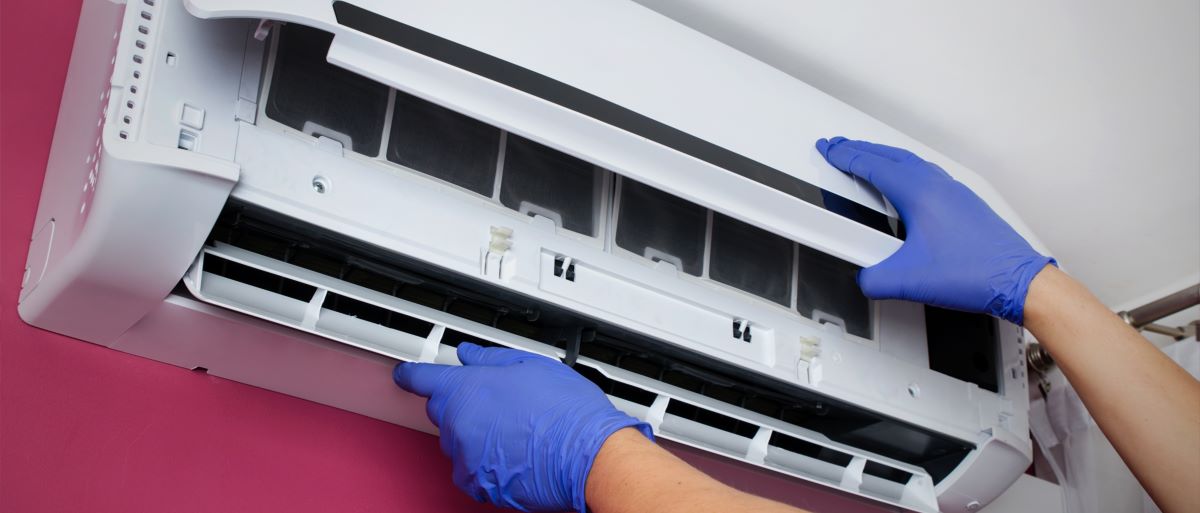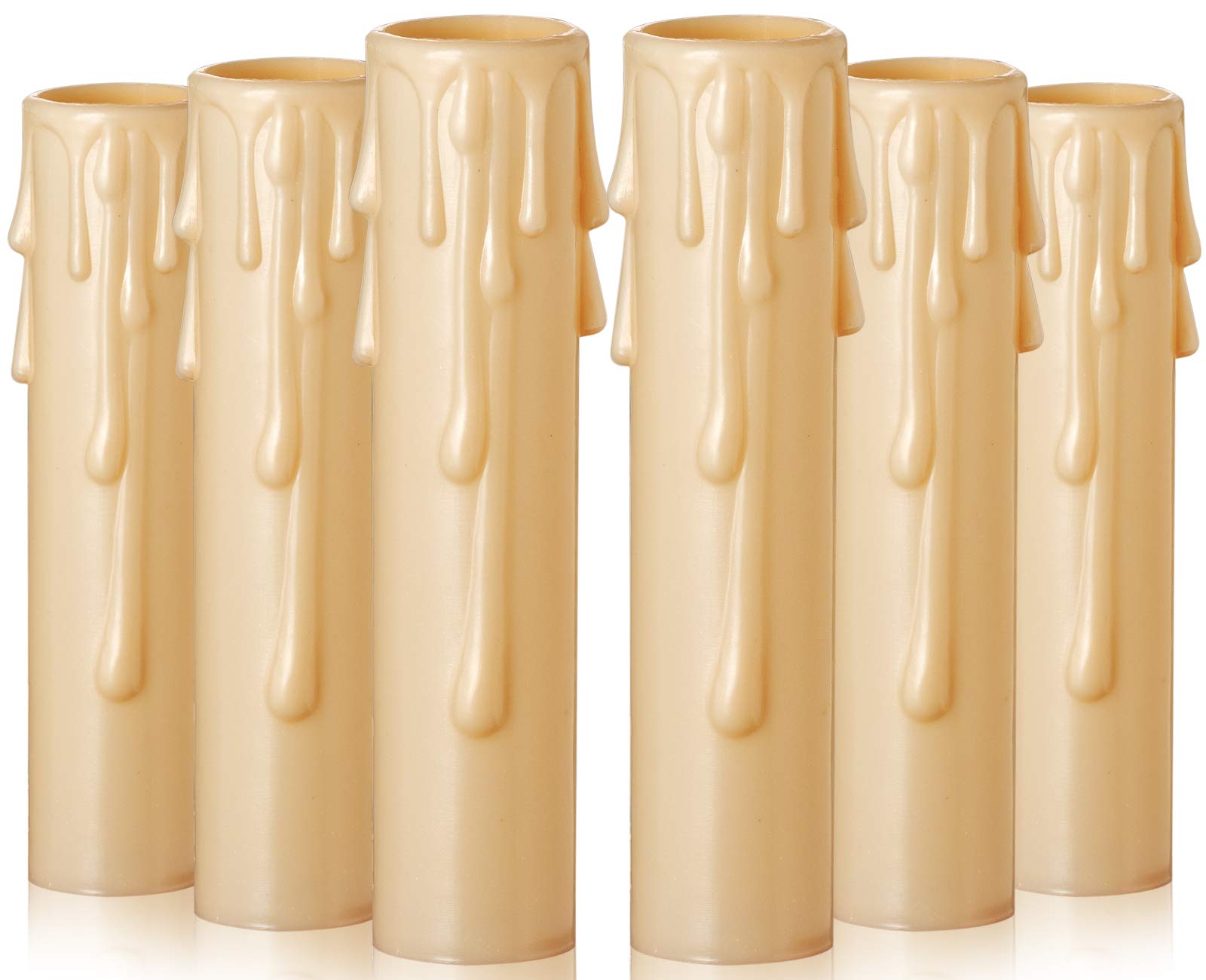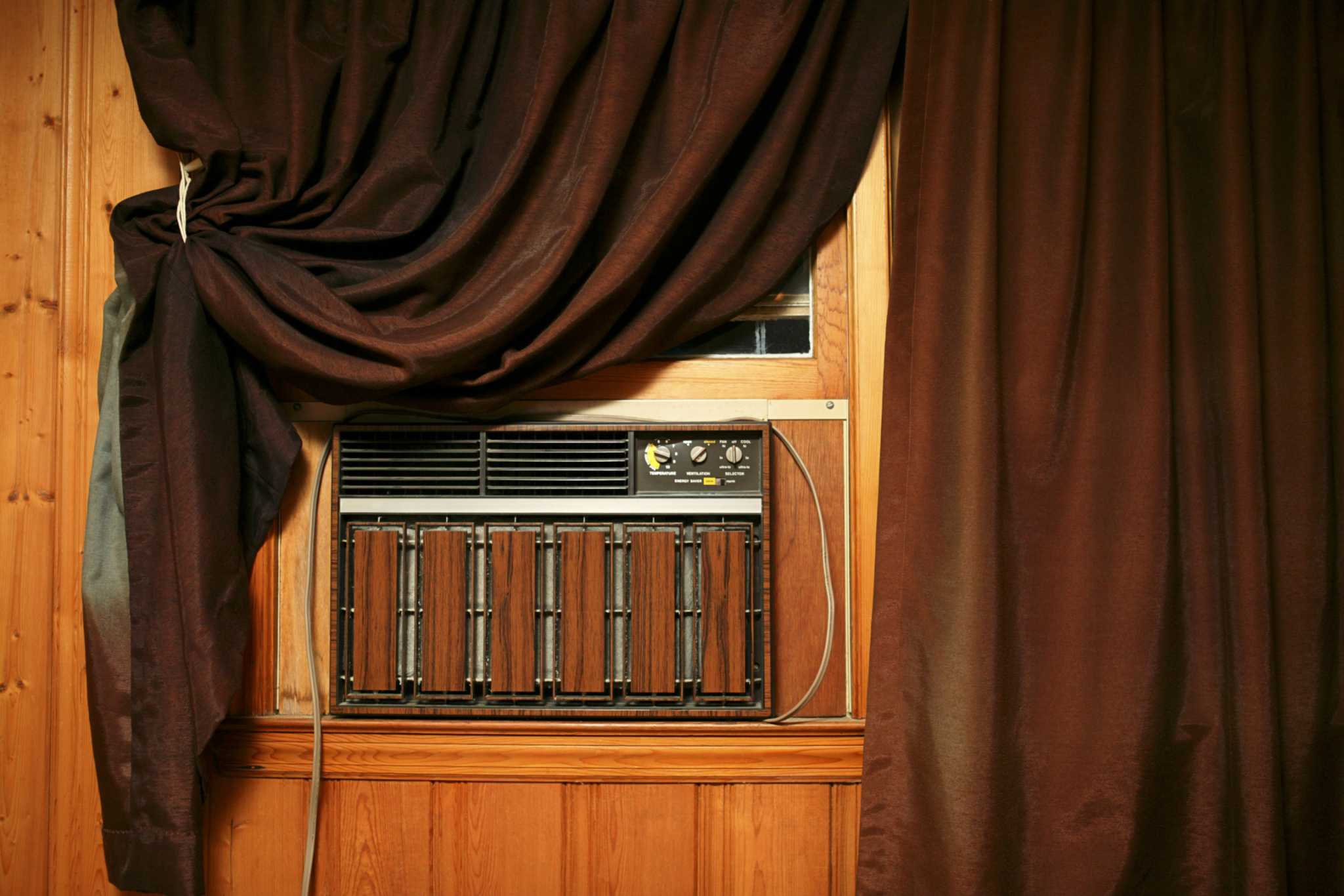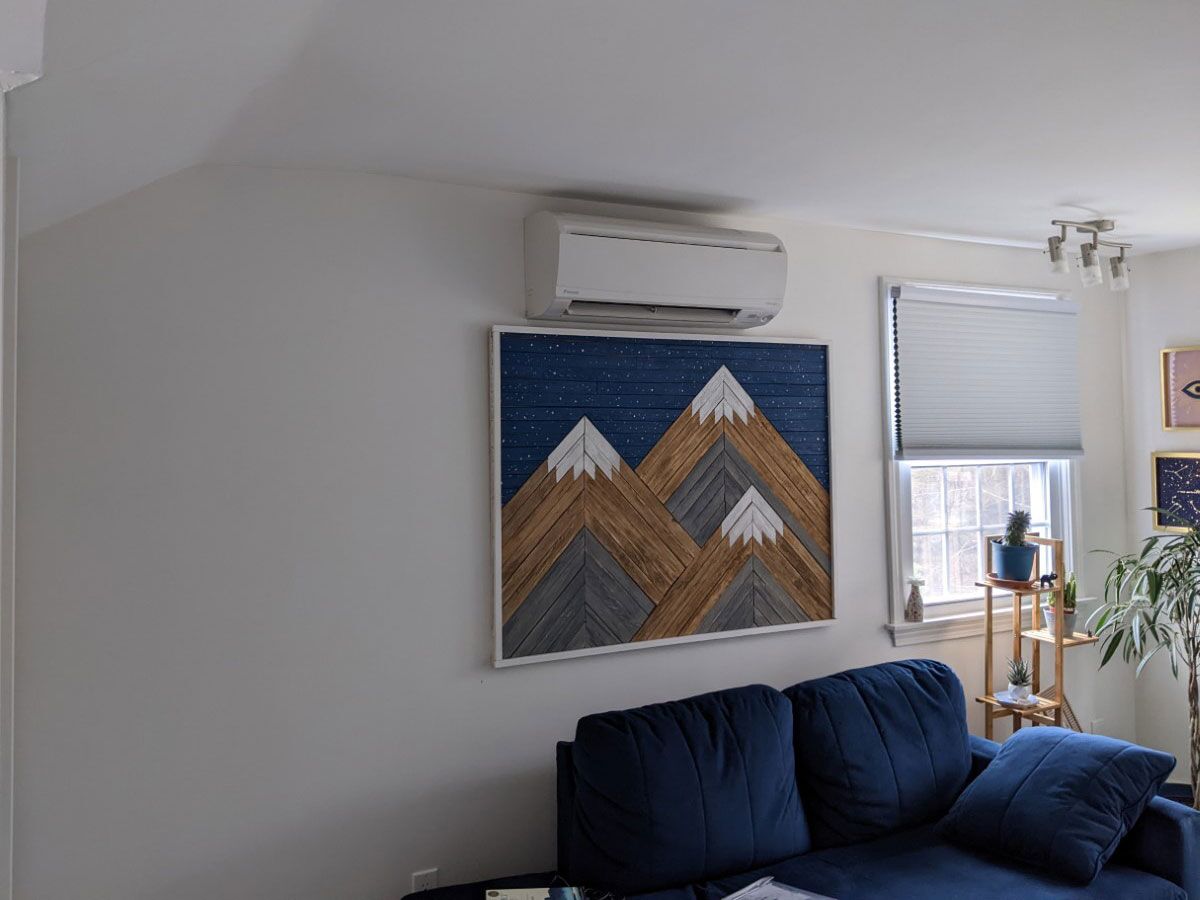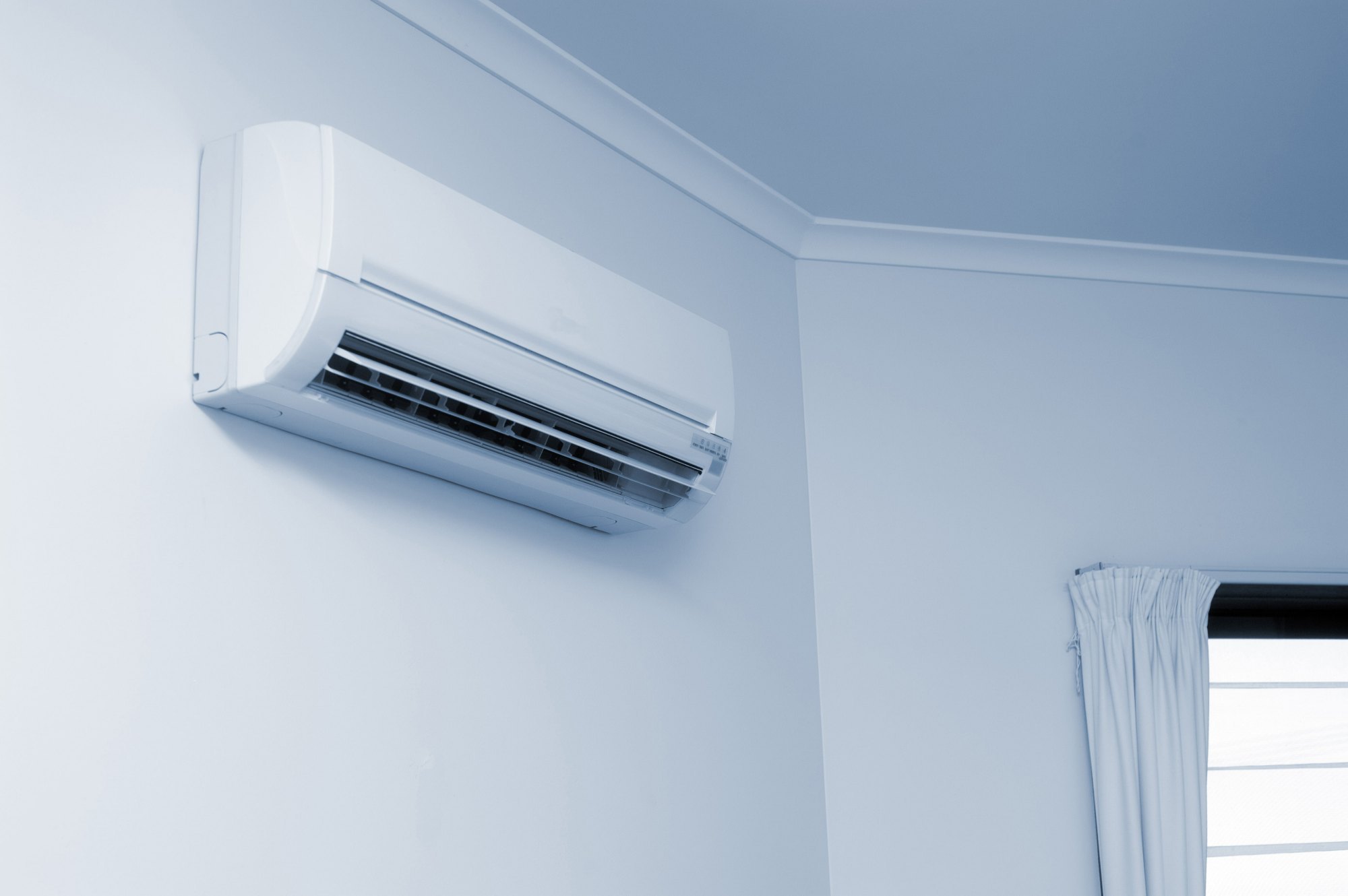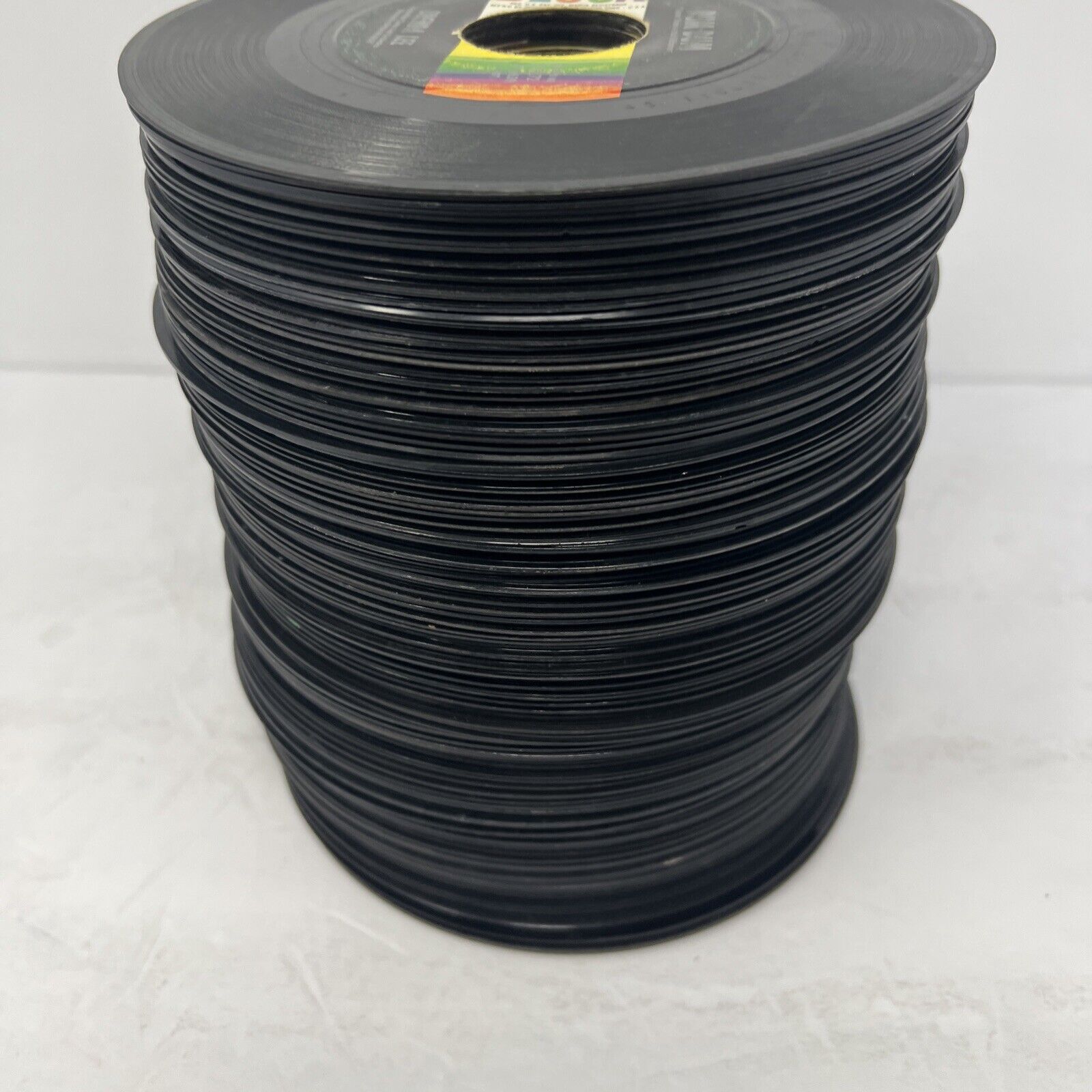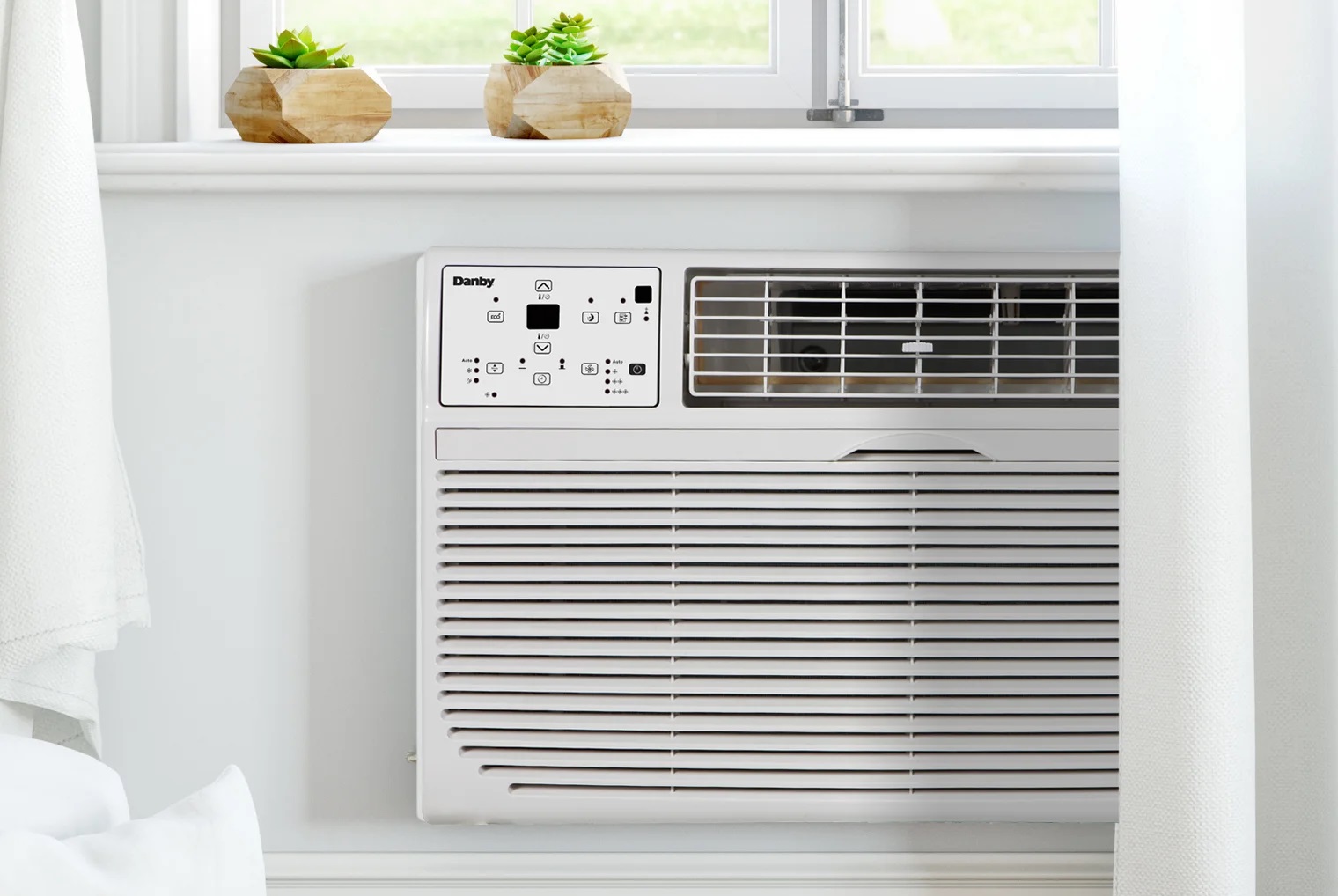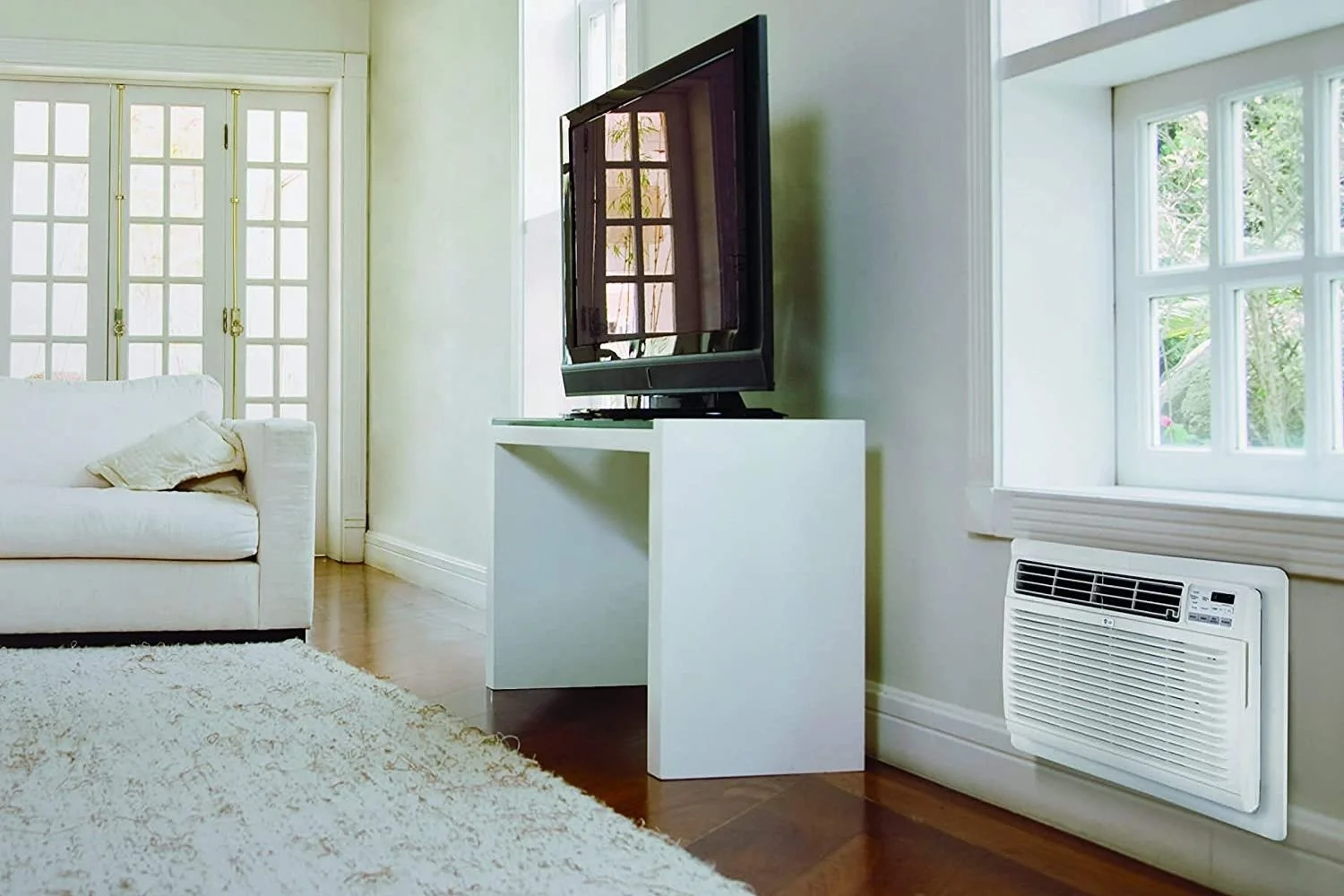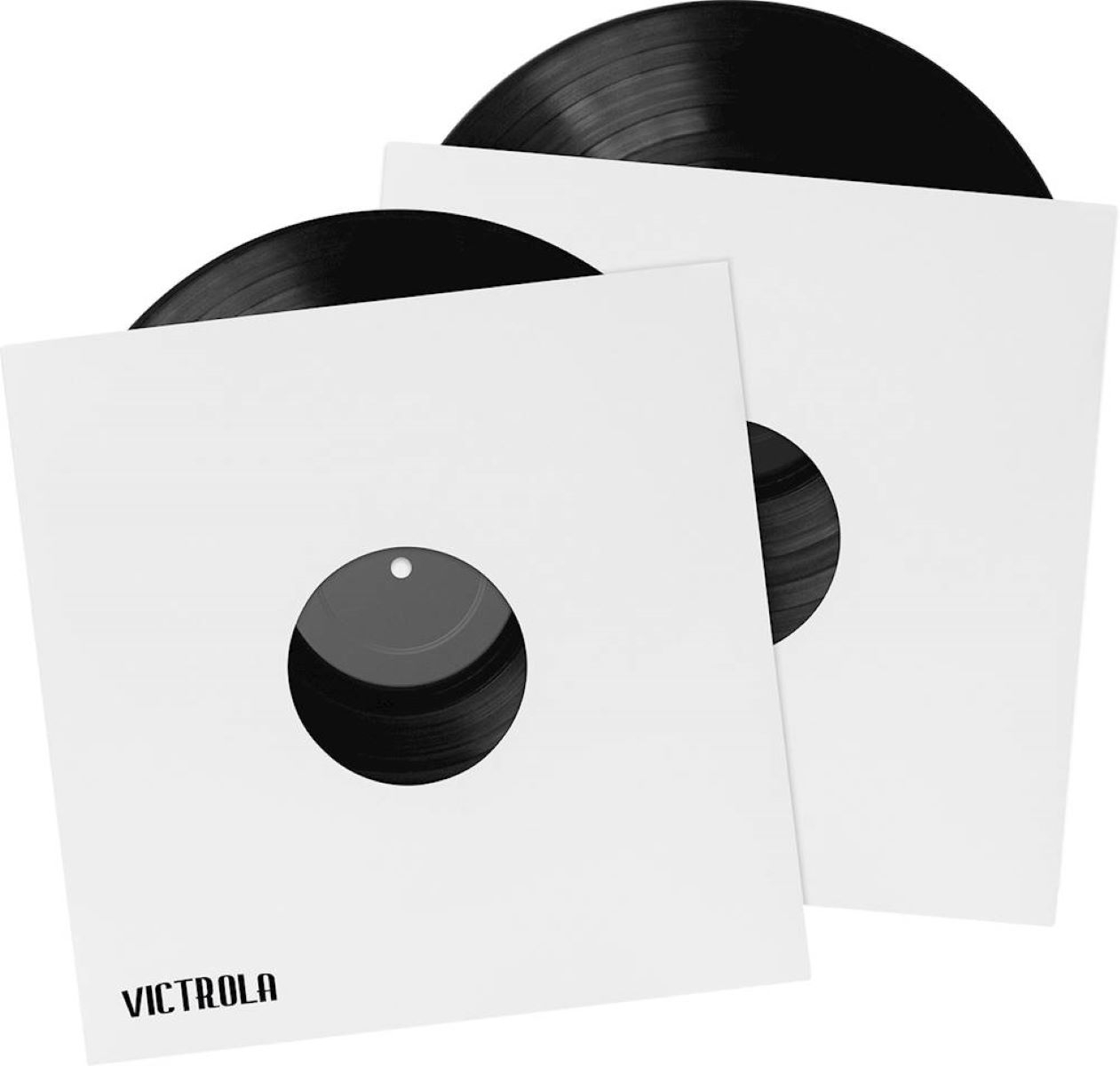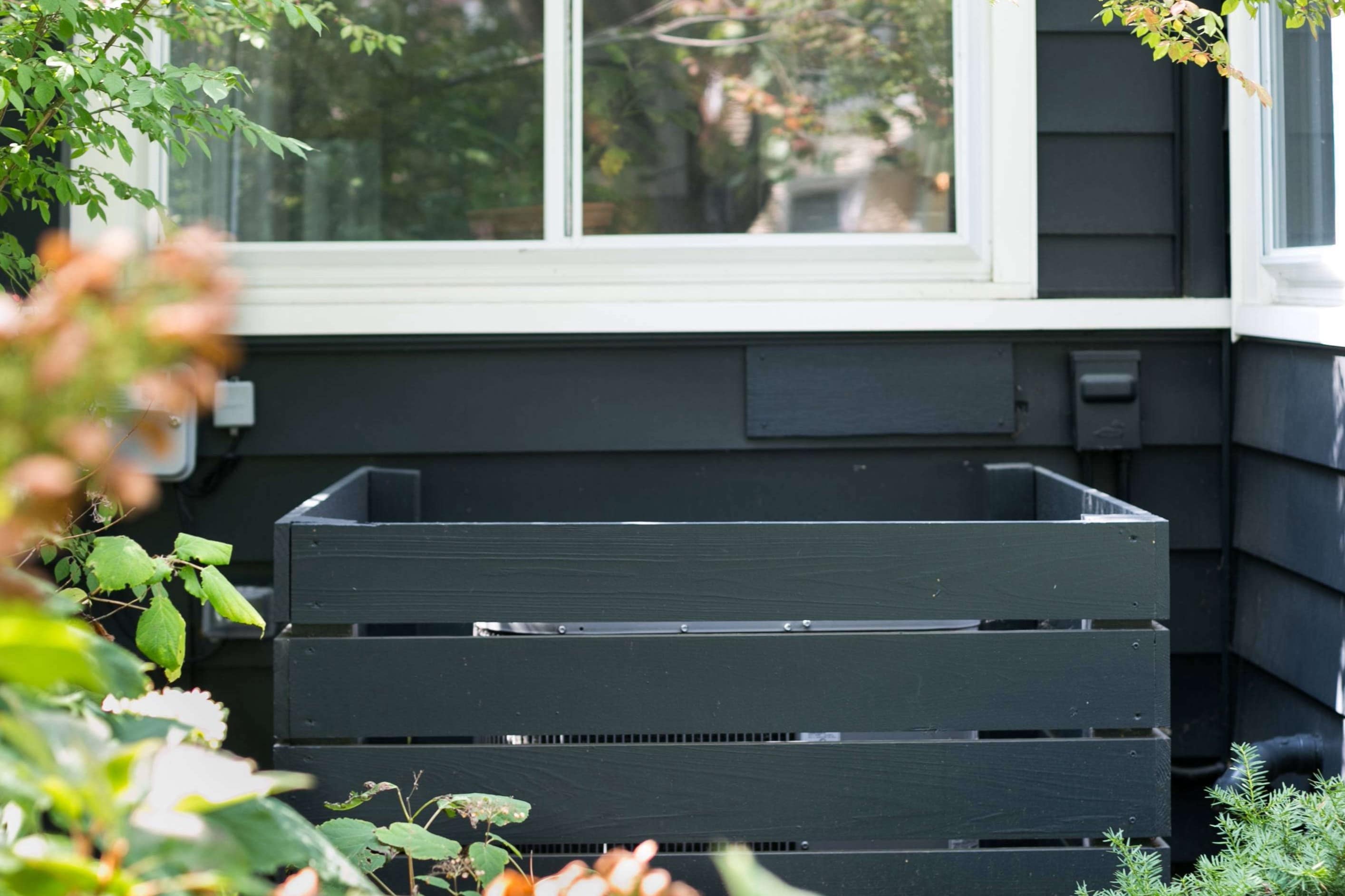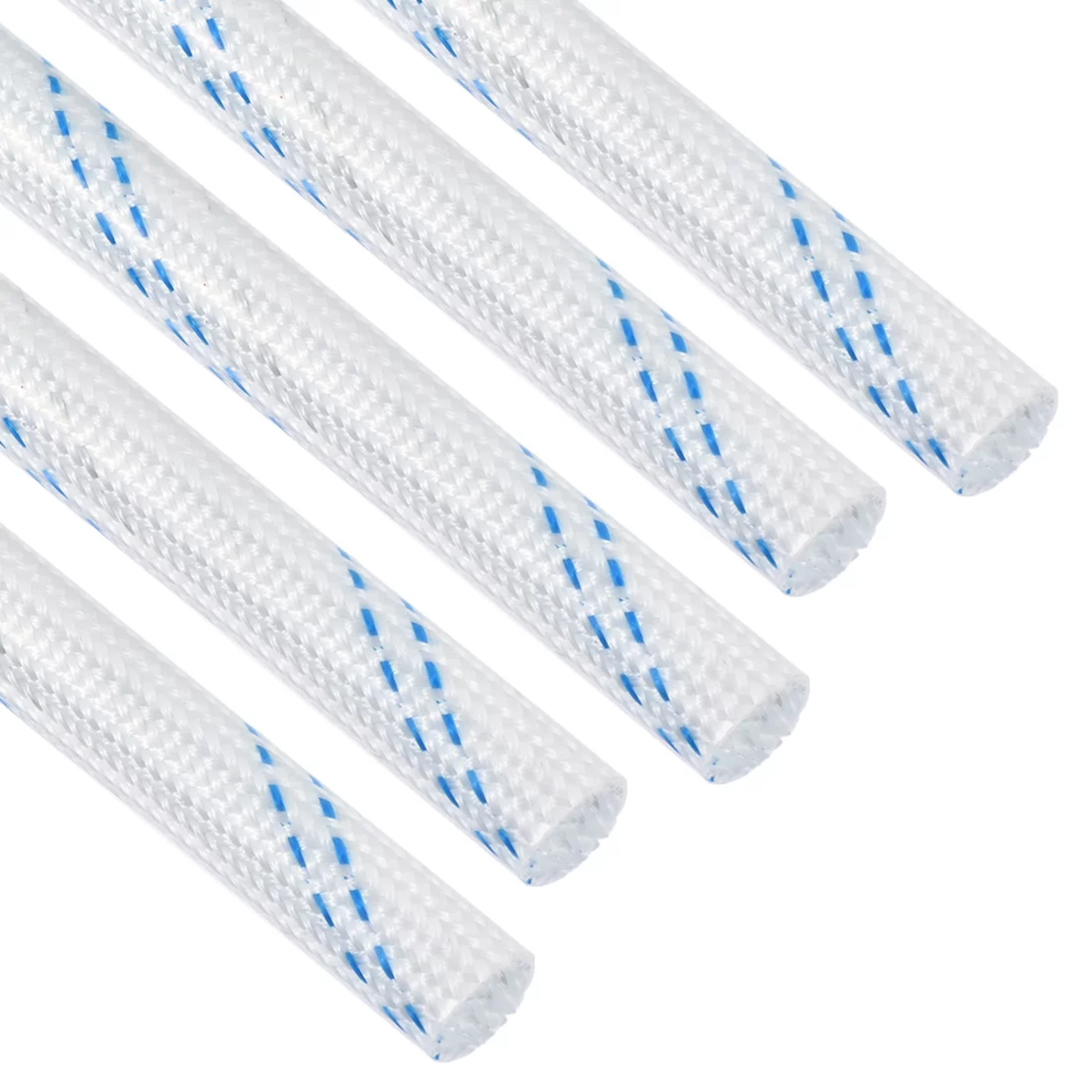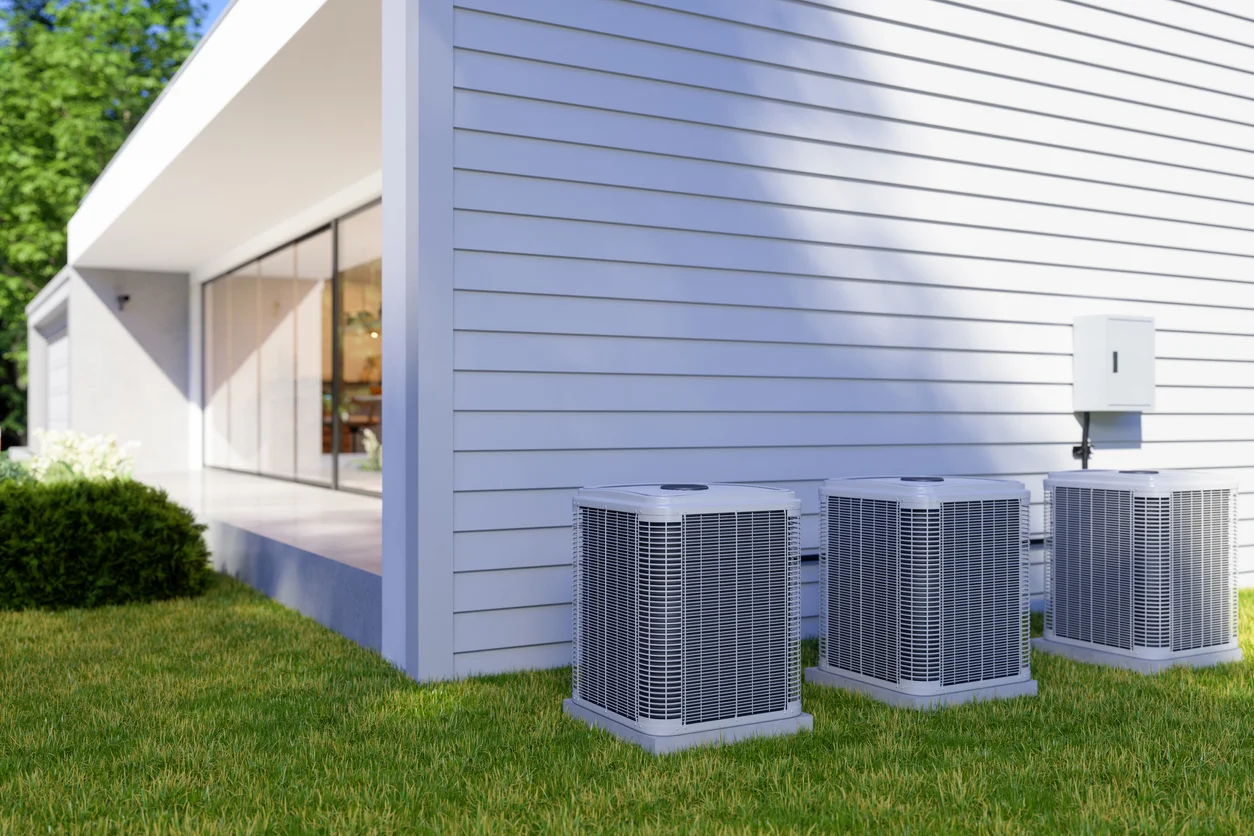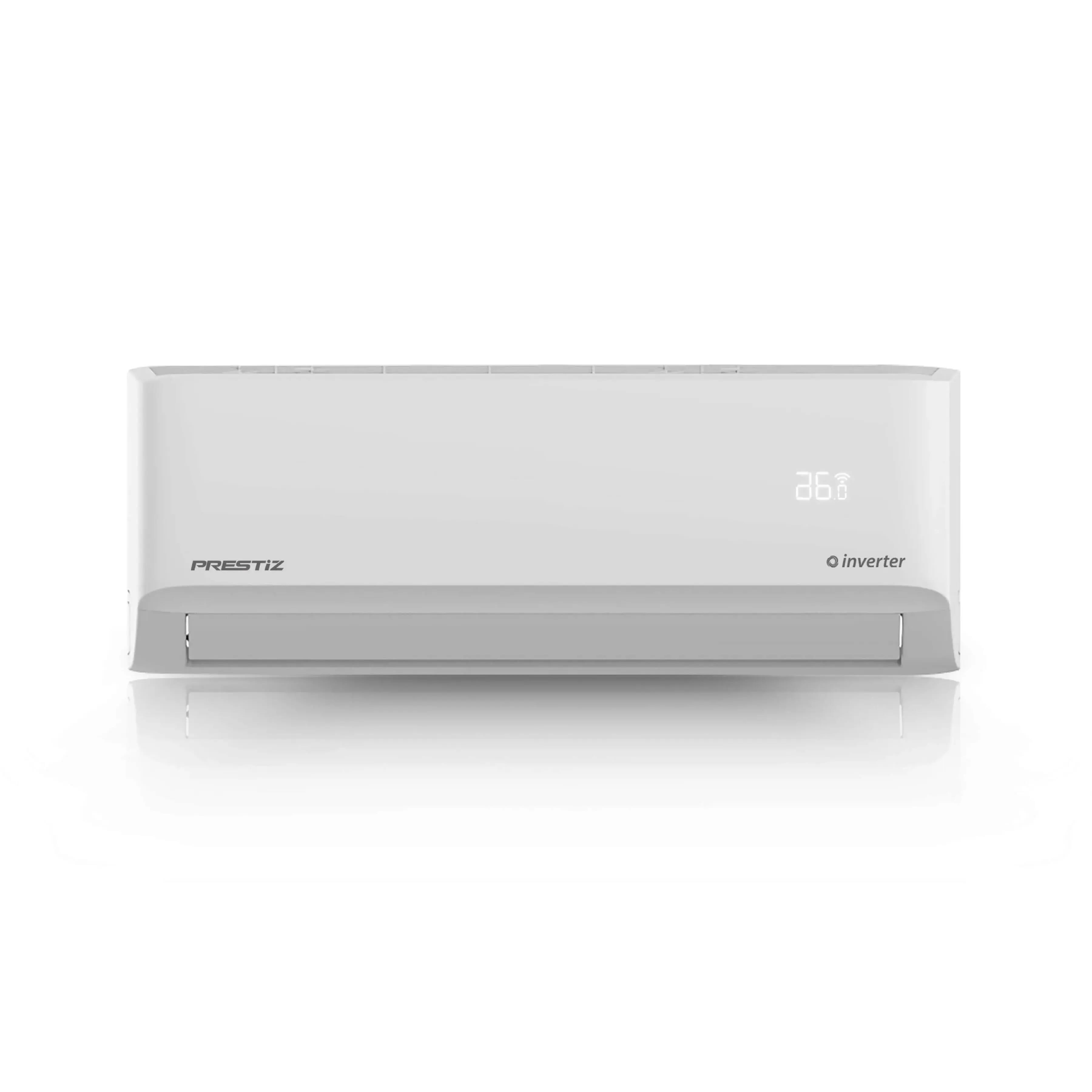Home>Home Maintenance>What Is A Wall Sleeve Air Conditioner
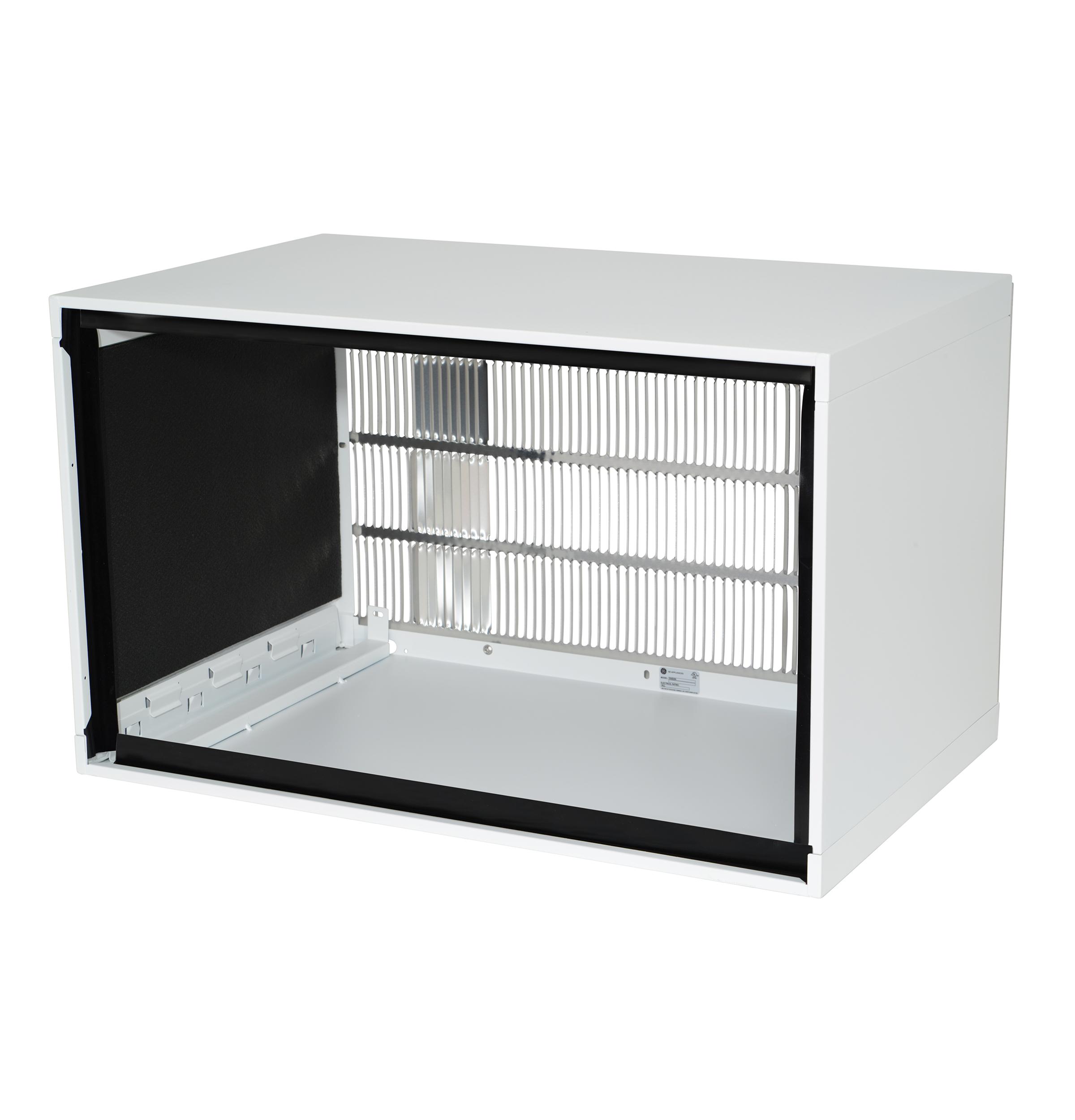

Home Maintenance
What Is A Wall Sleeve Air Conditioner
Modified: March 7, 2024
Learn all about wall sleeve air conditioners and their importance in home maintenance. Discover how these devices can provide efficient cooling solutions for your living space.
(Many of the links in this article redirect to a specific reviewed product. Your purchase of these products through affiliate links helps to generate commission for Storables.com, at no extra cost. Learn more)
Introduction
Welcome to the world of home maintenance, where we explore the ins and outs of keeping your humble abode in top-notch condition. One essential aspect of home maintenance is ensuring the comfort and air quality of your living space. And when it comes to controlling the temperature, there are several options available. One popular solution that provides efficient cooling is the wall sleeve air conditioner.
A wall sleeve air conditioner, also known as a through-the-wall air conditioner, is a cooling system that is installed directly into a wall opening. Unlike window air conditioners that are designed to fit in a window frame, wall sleeve air conditioners are mounted through a wall, offering a more permanent and seamless cooling solution.
These units are commonly used in homes, apartments, offices, and even hotels, providing a reliable and effective way to cool a specific room or area. In this article, we will delve into the world of wall sleeve air conditioners, exploring their functionality, installation process, maintenance requirements, and more.
So, if you’re looking for an efficient cooling option that doesn’t require a window installation, or if you simply want to learn more about this fascinating HVAC system, read on. We’ve got all the information you need to know about wall sleeve air conditioners.
Key Takeaways:
- Wall sleeve air conditioners are a space-saving and efficient cooling solution for specific rooms. They offer easy installation, quiet operation, and energy-saving features, making them a popular choice for homeowners and businesses.
- Regular maintenance and cleaning are essential for optimal performance and longevity of wall sleeve air conditioners. Understanding common issues and troubleshooting tips can help ensure efficient and uninterrupted cooling.
Definition of Wall Sleeve Air Conditioner
A wall sleeve air conditioner is a self-contained cooling system that is designed to be installed directly into a wall opening. It is specifically engineered to cool a single room or a specific area within a building, providing localized climate control. These units are an excellent alternative to window air conditioners, as they offer a more permanent solution without taking up valuable window space.
The key component of a wall sleeve air conditioner is the sleeve itself, which acts as a protective housing and mounting framework for the unit. The sleeve is typically made of a durable material such as metal or plastic and is designed to fit within the wall opening. It provides a secure and stable platform for the air conditioner to be installed and ensures it is properly sealed against external elements.
Inside the sleeve, the air conditioner unit consists of various components, including a compressor, condenser, evaporator, and fan. These components work together to cool the air and remove humidity from the room. The compressor pressurizes and circulates refrigerant through the system, while the condenser releases heat outside the building. The evaporator cools the air by removing heat and moisture, and the fan blows the cooled air back into the room.
Wall sleeve air conditioners come in different sizes and capacities to accommodate varying cooling needs. The cooling capacity is measured in British Thermal Units (BTUs), indicating how much heat the unit can remove from the room per hour. It’s important to choose an air conditioner with the appropriate BTU rating for the size of the room to ensure optimal cooling efficiency.
Overall, a wall sleeve air conditioner provides a reliable and efficient cooling solution, offering comfort and improved air quality in a specific area of your home or building.
How Wall Sleeve Air Conditioners Work
Understanding how wall sleeve air conditioners work is essential to grasp the mechanics behind their cooling capabilities. These units follow a similar principle to other air conditioning systems, but with a specific focus on installation through a wall.
The process begins with the wall sleeve, which is the housing unit installed within the wall opening. This sleeve acts as a secure and sealed enclosure for the air conditioner unit. It ensures that the unit is properly installed and prevents any external air from seeping into the room.
Inside the sleeve, the air conditioner unit contains several components that work together to cool the air. The compressor plays a crucial role in this process. It is responsible for compressing and circulating the refrigerant, which is a chemical that absorbs and releases heat as it changes state.
Once the refrigerant has been pressurized and circulated, it moves to the condenser. The condenser is located on the outside of the building, usually at the back of the wall sleeve. Here, the refrigerant releases the heat absorbed from the indoor air. This heat is expelled outside, helping to cool the refrigerant and prepare it for the next stage of the cooling process.
After passing through the condenser, the refrigerant moves to the evaporator. The evaporator is located inside the wall sleeve unit and is responsible for cooling the room air. As the warm air enters the unit, it passes over the evaporator coils, which contain the cold refrigerant.
As the warm air comes into contact with the evaporator coils, the refrigerant absorbs the heat, causing the air to cool down. At the same time, the refrigerant evaporates, changing from a liquid to a gas state. This process removes both heat and moisture from the air, improving the overall comfort and air quality of the room.
Finally, the cooled air is pushed back into the room through the fan located in the wall sleeve unit. This fan helps circulate the cool air and ensures proper airflow throughout the space.
Overall, the process of cooling a room with a wall sleeve air conditioner involves circulating refrigerant, extracting heat from the indoor air, and expelling the heat outside the building. It provides an efficient and effective solution for maintaining a comfortable environment.
Advantages of Wall Sleeve Air Conditioners
Wall sleeve air conditioners offer several advantages that make them a popular cooling solution for many homeowners and businesses. Whether you’re looking for a new cooling system or considering replacing your existing one, here are some key benefits of wall sleeve air conditioners to consider:
- Efficient Cooling: Wall sleeve air conditioners are designed to cool a specific area or room effectively. Their dedicated cooling capabilities ensure that they provide optimal performance in maintaining comfortable temperatures.
- Space-Saving Design: Unlike window air conditioners that take up valuable window space, wall sleeve air conditioners are installed through a wall. This design allows you to utilize your windows for natural light and other purposes while still enjoying the benefits of a cooling system.
- Sleek and Aesthetically Pleasing: Wall sleeve air conditioners blend seamlessly with the interior design of your room. The sleek and compact design offers a cleaner and more aesthetically pleasing appearance compared to bulky window units.
- Quiet Operation: Wall sleeve air conditioners are generally quieter than other cooling systems. The insulated sleeve and proper installation help minimize noise transmission from the unit to the room, providing a peaceful and comfortable environment.
- Flexible Installation: With wall sleeve air conditioners, you have the flexibility to choose the most convenient location within the room for installation. This allows for better airflow and ensures optimal cooling efficiency.
- Improved Energy Efficiency: Many wall sleeve air conditioners come with energy-saving features, such as programmable timers and adjustable thermostats. These features allow you to control and regulate the cooling according to your needs, helping to reduce energy consumption and save on utility bills.
- Easy Maintenance: Wall sleeve air conditioners are designed for easy maintenance. Most models come with removable air filters that can be easily cleaned or replaced, ensuring optimal performance and air quality.
- Durable and Long-Lasting: Wall sleeve air conditioners are built to last, with sturdy construction and durable materials. When properly installed and maintained, they can provide years of reliable cooling comfort.
- Suitable for Multiple Applications: Wall sleeve air conditioners can be used in various settings, such as homes, apartments, offices, and even hotels. Their versatility makes them a popular choice for both residential and commercial applications.
With these advantages, wall sleeve air conditioners offer a practical and efficient way to keep your living or working space cool and comfortable. Consider these benefits when deciding on the best cooling solution for your needs.
Installation Process of Wall Sleeve Air Conditioners
The installation process of a wall sleeve air conditioner requires careful planning and attention to detail to ensure proper functionality and efficiency. While it is recommended to have a professional handle the installation, here is a general overview of the steps involved:
- Select an Appropriate Location: Choose a location on an interior wall that allows for proper airflow and cooling distribution. Avoid placing the unit near obstacles that may impede airflow, such as furniture or curtains.
- Measure and Mark the Wall Opening: Measure the dimensions of the wall sleeve and mark the corresponding area on the interior wall. Double-check the measurements to ensure accuracy.
- Cut the Wall Opening: Using appropriate tools, carefully cut the marked area on the wall to create the opening for the wall sleeve. Follow safety precautions and make clean, straight cuts.
- Prepare the Sleeve: Attach any necessary mounting brackets or supports to the wall sleeve according to the manufacturer’s instructions. Ensure the sleeve is level and securely attached to the wall.
- Install the Sleeve: Insert the wall sleeve into the cut-out opening in the wall. Make sure it fits snugly and is flush with the wall surface. Use screws or other recommended fasteners to secure the sleeve in place.
- Connect the Electrical Wiring: Follow the manufacturer’s instructions to connect the electrical wiring of the wall sleeve air conditioner. It is crucial to follow proper electrical safety procedures and consult a professional if necessary.
- Install the Air Conditioner Unit: Carefully slide the air conditioner unit into the installed wall sleeve, making sure it aligns with the mounting framework. Secure the unit according to the manufacturer’s instructions.
- Seal and Insulate: Use appropriate insulation material to seal any gaps or spaces between the wall sleeve and the wall. Proper insulation helps prevent air leakage and improves energy efficiency.
- Test and Adjust: Once the installation is complete, test the air conditioner to ensure it is functioning properly. Adjust the settings as necessary to achieve the desired temperature and airflow.
While these steps provide a general guideline, it’s important to consult the specific installation instructions provided by the manufacturer. Additionally, hiring a professional technician for installation can help ensure that the process is done correctly and safely.
By following these installation steps or seeking help from a professional, you can enjoy the benefits of a properly installed wall sleeve air conditioner, providing efficient and reliable cooling in your living or working space.
When installing a wall sleeve air conditioner, make sure to properly seal any gaps around the unit to prevent air leaks and maximize energy efficiency.
Read more: What Is A Wall Air Conditioner
Maintenance and Cleaning of Wall Sleeve Air Conditioners
Maintaining and cleaning your wall sleeve air conditioner is essential for its proper functioning and longevity. Regular maintenance not only improves the unit’s performance but also helps maintain good air quality in your living space. Here are some important maintenance tasks to keep in mind:
- Cleaning the Air Filters: The air filters in your wall sleeve air conditioner collect dust, dirt, and other airborne particles over time. Clean or replace the filters regularly, as recommended by the manufacturer. Removing and cleaning the filters involves gently washing them with mild detergent and warm water. Once dry, reinstall them in the unit.
- Clearing Obstructions: Ensure that the air intake and outlet vents are free from any obstructions. Regularly check for any dust, debris, or blockages and clean them away. Blocked vents can restrict airflow and reduce the efficiency of the unit.
- Inspecting the Condenser Coil: The condenser coil located outside of the building can collect dirt, leaves, and other debris. Periodically inspect and clean the coil to remove any build-up that can hinder heat transfer. Use a soft brush or vacuum cleaner to gently remove the debris. Take caution not to damage the coil fins.
- Checking the Drainage System: Wall sleeve air conditioners have a drainage system to remove condensate from the unit. Ensure that the drainage pipe or hole is clear from any blockages. Check for any signs of water leaks or excessive moisture, as these could indicate a problem with the drainage system.
- Inspecting Electrical Connections: Regularly inspect the electrical connections and wiring for any signs of damage or wear. Loose connections can lead to improper functioning or safety hazards. If you notice any issues, consult a professional technician to address the problem.
- Professional Maintenance: It is recommended to schedule regular maintenance checks by a professional technician. They can perform a thorough inspection, clean the internal components, and identify any potential issues that require attention.
- Proper Storage: If you are removing your wall sleeve air conditioner for seasonal storage, ensure it is stored in a clean and dry location. Avoid exposing the unit to extreme temperatures or humidity. Cover the unit with a protective cover to prevent dust and debris from accumulating.
Remember to consult the manufacturer’s instructions for specific maintenance guidelines and recommendations. Regular maintenance and cleaning will not only help extend the lifespan of your wall sleeve air conditioner but also ensure optimal performance and energy efficiency.
Common Issues and Troubleshooting Tips for Wall Sleeve Air Conditioners
While wall sleeve air conditioners are reliable cooling systems, they can experience some common issues over time. Understanding these issues and troubleshooting them can help ensure efficient and uninterrupted cooling. Here are some common issues and troubleshooting tips:
- Poor Cooling Performance: If your wall sleeve air conditioner is not cooling the room effectively, check the air filters for dirt or clogs. Clean or replace the filters as needed to improve airflow. Additionally, ensure that the unit is properly sized for the room and that the vents are not blocked by furniture or other obstructions.
- Water Leakage: Water leakage can indicate a problem with the drainage system. Inspect the drainage pipe for clogs or obstructions and clear them if necessary. If the problem persists, consult a professional technician to assess and repair the drainage system.
- Unit Not Turning On: Check the power supply and ensure that the unit is properly plugged in. If the power supply is not the issue, inspect the electrical connections for any loose wires or damaged components. Reset the circuit breaker or replace any blown fuses if necessary. If the problem persists, contact a professional technician.
- Loud or Unusual Noises: Unusual noises can indicate a problem with the fan or other internal components. Inspect the fan blades for any obstructions and clean them if necessary. If the noise persists, it may require professional servicing to diagnose and resolve the issue.
- Frost Build-up: Frost or ice build-up on the evaporator coils can indicate a problem with airflow or low refrigerant levels. Check the air filters for dirt or clogs and clean or replace them. If the problem persists, it may require professional assistance to recharge the refrigerant or address any other underlying issues.
- Unpleasant Odors: Foul odors can be caused by accumulated dust, mold, or mildew. Clean the air filters and remove any visible debris. Use a mild mixture of water and vinegar to wipe down the unit’s interior surfaces. If the odor persists, consult a professional technician to address any mold or mildew growth.
- Thermostat Issues: If the unit is not maintaining the desired temperature, check the thermostat settings. Ensure that it is set to the correct mode (cooling) and that the temperature is properly adjusted. If the thermostat is unresponsive or not functioning correctly, it may require professional repair or replacement.
- Remote Control Problems: If the remote control is not operating the unit, check the batteries and replace them if needed. Ensure that the remote control is within range and that there are no obstructions blocking the signal. If the problem persists, consider replacing the remote control or contacting the manufacturer for further assistance.
Remember, if you encounter any issues with your wall sleeve air conditioner that you are unable to troubleshoot or resolve, it is best to seek professional assistance. Qualified technicians can diagnose and address complex issues and ensure the optimal performance of your cooling system.
Comparison of Wall Sleeve Air Conditioners with Other Air Conditioning Systems
When it comes to air conditioning systems, there are various options available, each with its own set of features and advantages. Let’s compare wall sleeve air conditioners with other common types of air conditioning systems to help you make an informed decision:
- Window Air Conditioners: Window air conditioners are designed to fit in a window frame, whereas wall sleeve air conditioners are mounted through a wall. While window air conditioners are easier to install, they can block natural light and require a window to be dedicated solely to the unit. Wall sleeve air conditioners, on the other hand, offer a more permanent and space-saving solution, as they don’t occupy window space and blend seamlessly into the wall.
- Ductless Mini-Split Systems: Ductless mini-split systems consist of an outdoor condenser unit connected to one or more indoor air handlers. They offer individual temperature control for different zones, allowing for energy efficiency and personalized comfort. While mini-split systems offer flexibility in terms of installation and zoning capabilities, they require professional installation and may not be suitable for every room or space. Wall sleeve air conditioners, on the other hand, are a simpler and more cost-effective option for cooling a specific room or area.
- Central Air Conditioning: Central air conditioning systems cool an entire building or multiple rooms through a network of ducts. They provide consistent and even cooling throughout the space but require extensive installation, maintenance, and ductwork. Wall sleeve air conditioners are a more targeted and economical option, providing cooling for a specific room without the need for ductwork or complex installation.
- Portable Air Conditioners: Portable air conditioners do not require permanent installation and can be easily moved from one room to another. They are suitable for temporary cooling or for spaces where installation is not possible. However, portable air conditioners require a window or vent for exhaust, which can limit their placement options. Wall sleeve air conditioners, on the other hand, offer a more permanent cooling solution without the need for venting.
- Geothermal Cooling Systems: Geothermal cooling systems use the constant temperature of the Earth to provide cooling. They are highly energy-efficient but require extensive ground loop or well installation. Geothermal systems are more suitable for new construction as they involve significant upfront costs. Wall sleeve air conditioners, on the other hand, provide a simpler and more cost-effective cooling option for existing structures.
Ultimately, the choice of an air conditioning system depends on various factors such as your specific cooling needs, budget, installation constraints, and energy efficiency goals. Consider evaluating these factors and consulting with HVAC professionals to determine the best system for your requirements.
Wall sleeve air conditioners offer a reliable, efficient, and cost-effective cooling solution for individual rooms or areas, making them a popular choice for many homeowners and businesses.
Conclusion
In conclusion, wall sleeve air conditioners are a versatile and efficient cooling solution for homes, offices, apartments, and other spaces. These units offer several advantages, including space-saving design, easy installation, and effective cooling performance.
By understanding the mechanics of wall sleeve air conditioners, you can appreciate their functionality and the benefits they provide. Their installation process requires careful planning and attention to detail to ensure proper operation and efficiency. Regular maintenance and cleaning are essential for optimal performance and to extend the lifespan of the unit.
When compared to other types of air conditioning systems, wall sleeve air conditioners stand out for their space-saving design, flexibility of installation, and cost-effectiveness. They are an excellent alternative to window units, providing a more permanent and seamless cooling solution without blocking natural light or obstructing window views.
While wall sleeve air conditioners may not be suitable for large-scale cooling applications or buildings with existing ductwork, they shine in cooling specific rooms or areas efficiently. Their ease of installation, quiet operation, and energy-saving features make wall sleeve air conditioners a popular choice for homeowners and businesses looking for localized cooling comfort.
Remember to research and consult professionals when selecting and installing a wall sleeve air conditioner to ensure proper sizing and operation. With regular maintenance and timely troubleshooting of common issues, you can enjoy consistent cooling performance and improved air quality in your living or working space.
Whether you’re searching for a cooling solution for a small room or looking to upgrade your existing system, consider the benefits of wall sleeve air conditioners. With their efficiency and convenience, they offer a reliable and cost-effective way to beat the heat and create a comfortable living environment.
Frequently Asked Questions about What Is A Wall Sleeve Air Conditioner
Was this page helpful?
At Storables.com, we guarantee accurate and reliable information. Our content, validated by Expert Board Contributors, is crafted following stringent Editorial Policies. We're committed to providing you with well-researched, expert-backed insights for all your informational needs.

